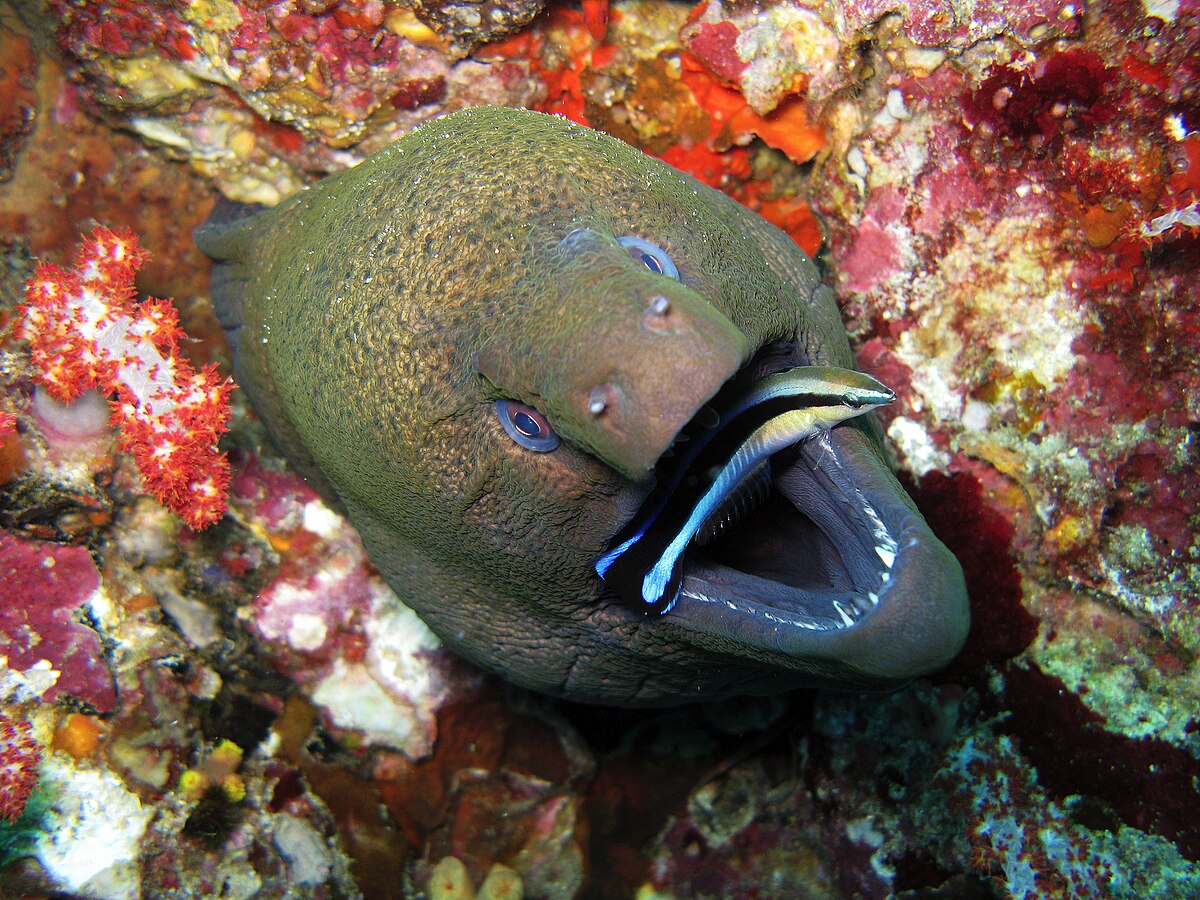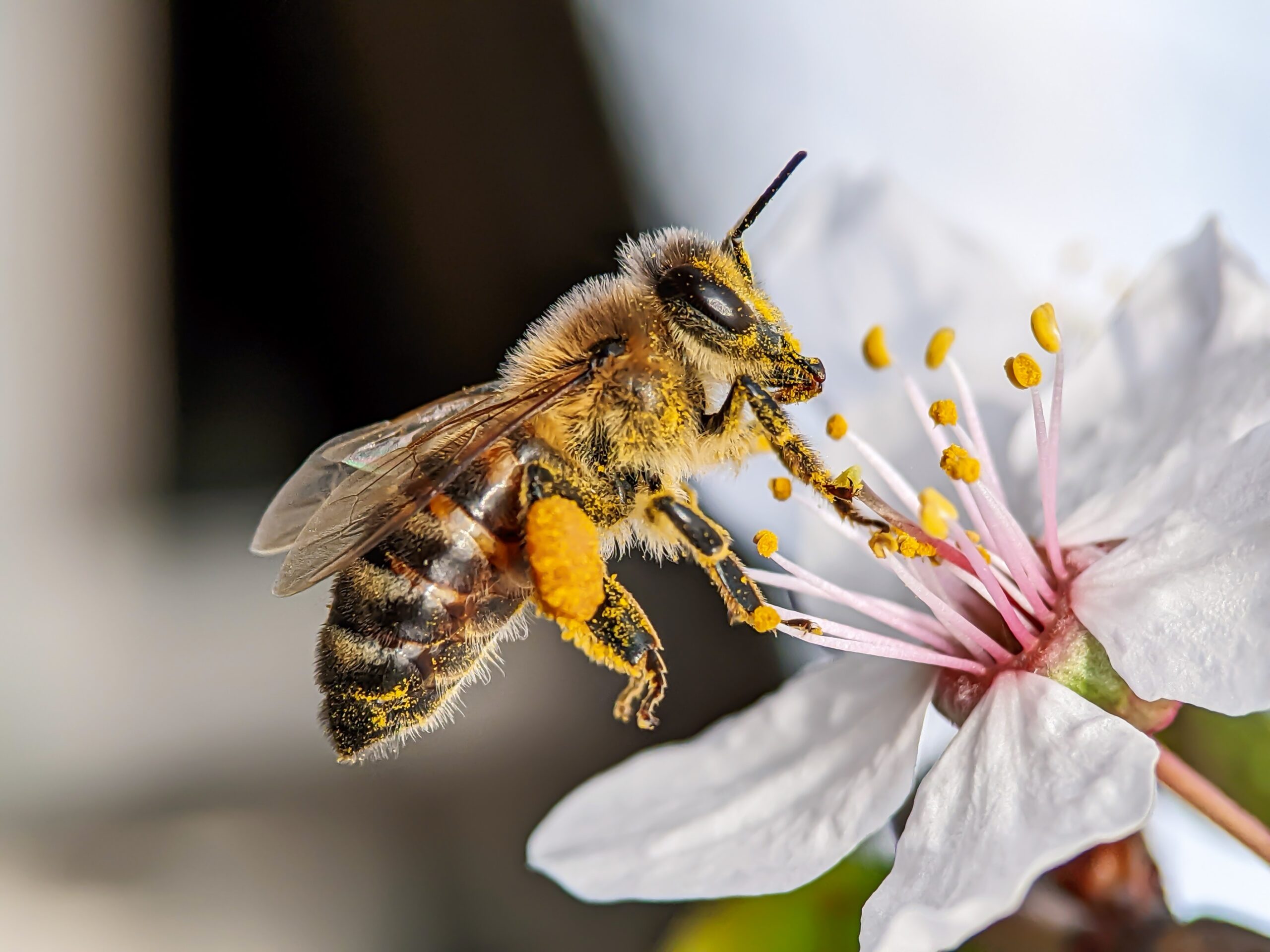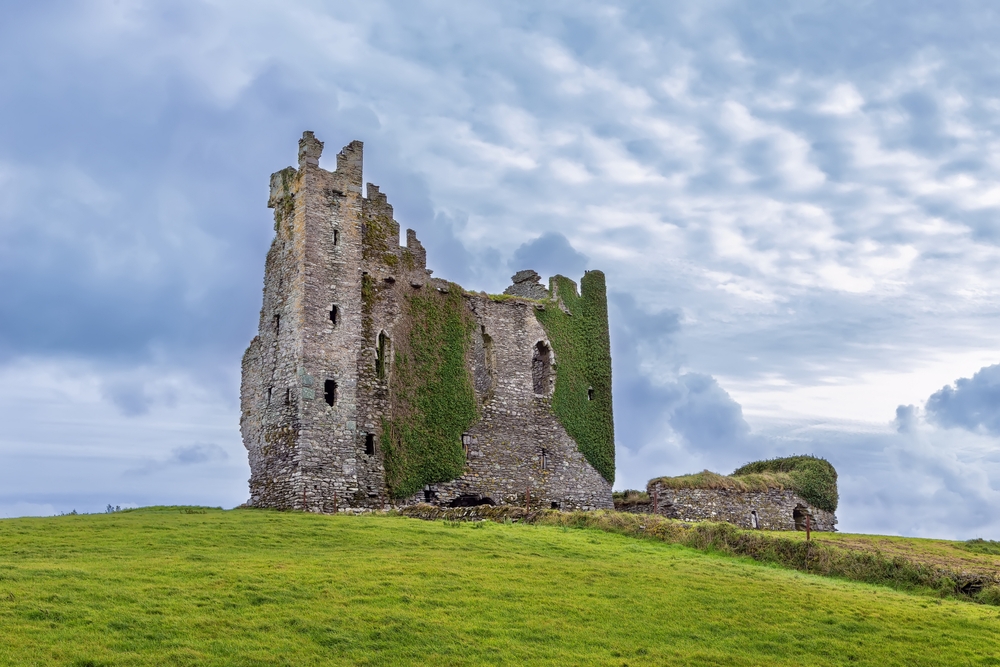Symbiotic relationships, where two different species live closely together and benefit from each other, are fascinating examples of nature’s interconnections. From tiny ants protecting towering trees to marine creatures teaming up for survival, these relationships show how cooperation can be essential for survival. Some of these partnerships are well-known, while others are much rarer, revealing the complexity of life on Earth. In this article, we’ll explore 18 remarkable species with uncommon symbiotic relationships, showcasing how diverse and intricate these interactions can be. Whether through mutual defense, shared resources, or even unexpected alliances, these examples highlight the wonders of nature’s cooperation.
Pistol Shrimp and Gobies

Pistol shrimp and gobies form a mutualistic bond that benefits both species. The shrimp digs and maintains a burrow for protection, while the goby acts as a lookout, warning the shrimp of approaching predators. The shrimp, being nearly blind, relies on the goby’s keen vision for early detection. In return, the goby shares the burrow, which provides a safe refuge from predators. This partnership is not just about safety; the goby also helps maintain the burrow’s structure. The shrimp uses its powerful claw to defend their home, while the goby alerts it to any danger. This relationship is a stunning example of how two creatures with differing abilities can create a thriving shared existence.
Leafcutter Ants and Fungus

Leafcutter ants are known for their complex farming practices, cultivating fungus as their primary food source. These ants cut leaves and carry them back to their colonies, where they use the plant material to nourish the fungus. The ants provide the fungus with a substrate and constant care, ensuring its growth and health. In exchange, the fungus offers the ants a rich food supply, as they harvest it for consumption. The relationship between the ants and their fungus is so intricate that the ants cannot survive without their fungal crop. Interestingly, the ants also protect their fungus from harmful microbes by using antibacterial secretions. This symbiosis is a fascinating example of agricultural and microbial cooperation in nature.
Clownfish and Sea Anemones

Clownfish and sea anemones share one of the ocean’s most well-known symbiotic relationships. The clownfish, with its protective mucus coating, can safely navigate the venomous tentacles of the sea anemone. The sea anemone, in return, benefits from the clownfish’s cleaning habits, as the fish removes parasites and debris from its tentacles. Additionally, the clownfish provides food for the anemone in the form of small invertebrates and detritus. The sea anemone offers the clownfish protection from predators, who are deterred by its stinging cells. This mutualistic relationship allows both species to thrive in environments that would otherwise be hostile. Together, they form a unique partnership based on protection, nourishment, and care.
Oxpeckers and Herbivores

Oxpeckers, small birds found in Africa, engage in a mutualistic relationship with large herbivores such as buffalo and giraffes. These birds feed on ticks, dead skin, and other parasites that infest the herbivores’ skin. The herbivores, in turn, benefit from having pests removed, improving their overall health. However, oxpeckers are notorious for going beyond mere cleaning, sometimes pecking at the herbivore’s wounds to feed on blood. This parasitic behavior has led some to question whether the relationship is truly mutualistic. Nonetheless, the herbivores still tolerate the oxpeckers, as the benefits of pest removal often outweigh the negatives. This complex relationship showcases the fine line between cooperation and exploitation in nature.
Myrmecophytes and Ants

Myrmecophytes, plants that host ant colonies, engage in a fascinating form of mutualism. The plants provide shelter in the form of hollow structures, called domatia, which ants use as nests. In exchange, the ants protect the plant from herbivores by aggressively defending it from any potential threats. Additionally, ants often “prune” the plant, removing dead or decaying leaves and keeping it healthy. The ants also contribute nutrients to the plant by depositing organic waste, which acts as a natural fertilizer. In this way, both parties benefit: the plant receives protection and nourishment, while the ants enjoy a safe home and abundant resources. This type of symbiosis is commonly seen in tropical and subtropical regions.
Cleaner Fish and Host Fish

Cleaner fish, such as cleaner wrasses and cleaner shrimp, form symbiotic relationships with larger fish. These smaller creatures feed on parasites, dead skin, and mucus found on the bodies of the host fish. The host fish, in return, receives a hygienic service, often appearing healthier and more vibrant after a cleaning session. While the arrangement is typically mutually beneficial, cleaner fish can sometimes engage in “cheating” behavior, nibbling on the host’s scales or even attacking the fish’s mucus. Despite this occasional betrayal, the relationship largely remains beneficial, as the host fish understand the value of the cleaner fish. In some cases, cleaner fish have been observed to communicate with host fish through specific behaviors, such as color changes. This fascinating partnership highlights the importance of maintenance and hygiene in marine ecosystems.
Bats and Agave Plants

In the deserts of the Americas, bats and agave plants share an essential, yet often overlooked, relationship. Bats, specifically the lesser long-nosed bat, pollinate agave flowers as they feed on their nectar. As the bats visit multiple flowers, they inadvertently transfer pollen from one agave to another, facilitating reproduction. The bats benefit by gaining a rich food source, while the agave plants ensure their survival by reproducing. This relationship is critical for the production of tequila, as agave plants depend on pollinators like bats for successful flowering. In recent years, declining bat populations have raised concerns about the future of agave crops and tequila production. The decline of one species has the potential to impact an entire industry, making this mutualism vital to both biodiversity and agriculture.
Egrets and Large Herbivores

Egrets, particularly cattle egrets, share a symbiotic relationship with large herbivores like cows and buffalo. The egrets follow the herbivores, feeding on insects, ticks, and other pests that are stirred up by the movement of the large animals. The herbivores benefit from the removal of these pests, reducing their likelihood of infection and discomfort. The egrets, in turn, gain an easy meal, as the herbivores provide an almost constant source of food. This arrangement is so established that the egrets often show little fear of the herbivores, staying close to their large companions. Interestingly, the egrets’ behavior has been observed to extend to other large mammals, including rhinoceroses and elephants. This partnership underscores the importance of cooperation between species for survival in the wild.
Leaf-Tailed Geckos and Trees

Leaf-tailed geckos are masters of camouflage, blending seamlessly with the leaves and bark of the trees they inhabit. These geckos benefit from the protection offered by their environment, avoiding predators thanks to their remarkable resemblance to dead leaves. In return, the trees benefit from the geckos’ presence, as they help control the insect population by feeding on them. The relationship is one of mutual benefit: the geckos receive protection from predators and abundant food, while the trees are less likely to suffer from insect infestations. This remarkable camouflage is achieved through the geckos’ unique body shapes and coloration. The geckos’ flattened bodies allow them to fit snugly against tree trunks or leaves, making them nearly invisible. This form of mutualism highlights the intricate ways animals and plants adapt to one another’s needs.
Coral and Zooxanthellae

Coral reefs rely on a mutualistic relationship with tiny photosynthetic organisms called zooxanthellae. These algae live within the coral’s tissues, providing the coral with sugars produced through photosynthesis. In return, the coral offers the zooxanthellae a protected environment and access to sunlight. This relationship is vital to the survival of coral reefs, as the algae help to supply up to 90% of the coral’s energy needs. The vibrant colors of coral reefs come from the zooxanthellae, which thrive in nutrient-rich environments. However, if the water becomes too warm or polluted, the corals can expel the algae, leading to coral bleaching. This delicate balance underscores the importance of maintaining healthy marine ecosystems to support both species.
Plover Birds and Crocodiles

The plover bird and the Nile crocodile share a fascinating, if somewhat surprising, symbiotic relationship. The plover feeds on parasites and food remnants stuck in the crocodile’s teeth, performing a cleaning service for the reptile. In exchange, the crocodile provides the plover with a reliable food source. The birds are remarkably unafraid of the crocodile, and have been seen hopping inside the crocodile’s open mouth to clean its teeth. This unusual relationship offers clear benefits for both species: the crocodile’s teeth are kept free of debris, and the plover gets an easy meal. The mutual trust between these creatures is essential to the success of this arrangement. It’s a perfect example of how even the most unlikely animal partnerships can evolve.
Hummingbirds and Flowers

Hummingbirds and flowers share a vital pollination relationship, where both species benefit greatly. The hummingbirds feed on nectar from the flowers, using their specialized long bills and hovering abilities to access the nectar. As they do so, they inadvertently transfer pollen between flowers, facilitating reproduction. The flowers rely on the hummingbirds for this crucial pollination, which allows them to produce seeds and reproduce. In return, the hummingbirds are rewarded with a rich food source in the form of nectar. This partnership is especially common in tropical and subtropical regions, where hummingbirds are more abundant. The efficiency of hummingbird pollination has made them key players in the reproductive success of many plant species.
Ants and Acacia Trees

Acacia trees host colonies of ants within their hollow thorns. In exchange for shelter, these ants aggressively defend the tree from herbivores, attacking anything that attempts to eat the acacia’s leaves. The acacia tree also provides food for the ants, producing nectar from specialized glands. The ants actively prune surrounding vegetation to prevent other plants from competing with the acacia for resources. This mutualistic relationship benefits both species: the acacia gains protection, while the ants have a reliable food source and home. It’s a unique partnership where the ants not only protect but also help maintain the tree’s health. This symbiotic relationship has evolved over millions of years to ensure mutual survival.
Bees and Flowers

Bees and flowers engage in one of nature’s most well-known and important mutualistic relationships: pollination. As bees collect nectar from flowers, they inadvertently transfer pollen from one bloom to another, facilitating fertilization. This pollination process is essential for the reproduction of many plants, especially flowering species. In return for their labor, bees receive nectar, which they use to make honey. The flowers, dependent on pollinators, would struggle to reproduce without the bees’ help. This interdependence has led to the evolution of various adaptations in both flowers and bees. Some flowers even have specialized shapes or scents to attract specific types of bees, demonstrating the complexity of this relationship.
Lichen and Algae/Fungi

Lichen is a unique symbiotic organism formed by the mutualistic relationship between fungi and algae (or cyanobacteria). The fungi provide structure and protection, offering a safe environment for the algae to thrive. In return, the algae photosynthesize, producing food that nourishes the fungi. This relationship allows lichens to survive in extreme environments where neither the fungi nor the algae could survive alone. Lichens can be found in some of the harshest conditions on Earth, from arctic tundras to hot deserts. The partnership between algae and fungi is an excellent example of how two organisms can adapt to make life possible in places otherwise inhospitable. Lichens contribute to soil formation by breaking down rock surfaces, highlighting their ecological significance.
Sloths and Moths

Sloths and moths share a unique and somewhat surprising mutualistic relationship. Moths live in the fur of sloths, where they find a safe haven from predators and a nutrient-rich environment. The moths lay their eggs in the sloth’s fur, and when the larvae hatch, they feed on the sloth’s hair and detritus. The sloth, in turn, benefits from this relationship by hosting moths that are capable of fertilizing its fur with nitrogen-rich feces. This fertilization promotes the growth of algae, which the sloth eats. This relationship helps both species by creating a cycle where each benefits from the other’s presence. This unusual bond between two very different organisms shows how interconnected ecosystems can be.
Termites and Protists

Termites are well-known for their ability to digest wood, but they do so with help from protists, microorganisms living in their guts. These protists break down cellulose, which termites cannot digest on their own. In return for the protists’ digestive aid, termites provide a constant food supply of wood and other plant material. This mutualistic relationship allows termites to feed on some of the toughest materials in nature. Without their gut-dwelling protists, termites would not be able to thrive on such a specialized diet. This partnership has been refined over millions of years of co-evolution. The survival of termites is deeply intertwined with the microscopic organisms that assist in their digestion.
Bats and Cacti

Certain species of bats and cacti engage in an interesting mutualistic relationship. Bats feed on the nectar and pollen of cacti, and in doing so, they help pollinate the plants. In return, the cacti provide a food source for the bats, especially during dry seasons when other food is scarce. As bats fly from cactus to cactus, they facilitate cross-pollination, which is crucial for the reproduction of the plant. The cactus, in turn, provides a vital food source for the bats in harsh environments like deserts. The bats’ droppings also enrich the soil, helping the cacti thrive. This relationship is an example of how different species adapt to harsh ecosystems, ensuring their mutual survival.
This article originally appeared on Rarest.org.
More From Rarest.Org
Some U.S. capitals hold stories that reach back through centuries, offering a glimpse into the nationâs roots. These cities have seen the country grow from early colonies to the bustling states they represent today. Read more.
Lighthouses have been a beacon of safety and guidance for sailors navigating treacherous waters for centuries. Many of the oldest ones in the United States stand as historic landmarks, showcasing the country’s rich maritime heritage. Read more.
Across the globe, ancient fortresses stand as silent witnesses to the rise and fall of civilizations. These impressive structures, once vibrant with activity, have been forgotten by time due to war, natural disasters, or changing societal needs. Read more.



